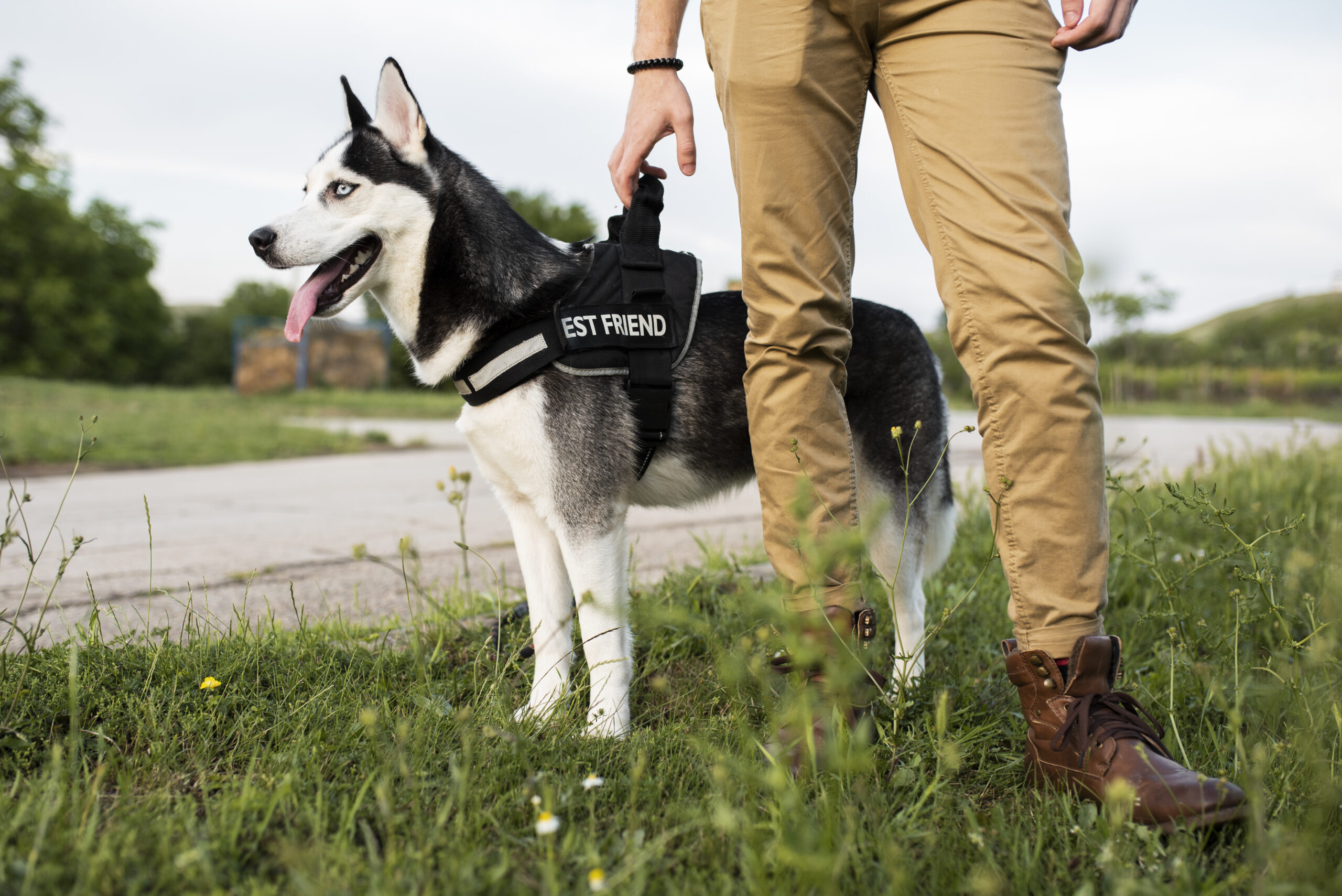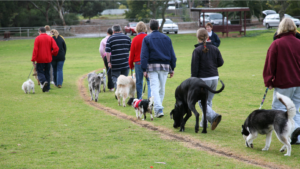Dog Training For Emergency Situations
Dog training for emergencies is crucial for ensuring your dog’s safety and preparedness during crises. This guide covers essential skills and preparation tips for effective emergency response training. It’s astonishing to consider that a well-trained dog can be the difference between life and death in an emergency situation. Dogs have been aiding humans for thousands of years, but their roles in contemporary emergency situations are continually evolving. This evolution highlights the critical need for specialized training in skills ranging from search-and-rescue to first response.
The concept of training dogs for emergencies is not new, but its significance continues to grow. For instance, the National Disaster Search Dog Foundation reports that trained canines can locate disaster victims in mere minutes, a feat impossible for human rescuers alone. This specialized training ensures that these remarkable animals can assist in various high-stress environments, ultimately saving lives and making our communities safer.
Importance of Dog Training for Emergency Situations
Dogs play a vital role in emergency situations. Their keen senses and agility make them invaluable assets. Whether finding a lost person or alerting to danger, trained dogs act quickly. They can perform tasks that humans cannot do efficiently. This unique capability highlights the necessity of their special training.
Training a dog for emergencies ensures they can help during disasters like earthquakes and floods. Emergency-trained dogs can also assist people with disabilities by alerting them to critical situations. For instance, some dogs are trained to sense diabetic emergencies. It equips them to respond effectively when their owners need help. This specialized training saves lives and adds a layer of safety.
The training also improves the dog’s confidence and ability to stay calm under pressure. This is crucial as emergency situations can be highly stressful. A dog that remains composed is more effective in aiding emergency responders. It also minimizes risks to both the dog and the people they are helping. Calm and composed dogs make the operation smoother.
Emergency dog training involves different types of exercises and simulations. These include search-and-rescue drills, agility courses, and obedience training. This multi-faceted approach ensures the dog is well-prepared. Lists can include training aspects like:
- Basic obedience
- Advanced search techniques
- Disaster response simulations
Role of Dogs in Emergency Situations
Dogs have a crucial role in emergency situations thanks to their incredible sense of smell and hearing. These abilities allow them to detect survivors trapped under rubble or snow. Search-and-rescue teams depend on dogs for their speed and efficiency. In wildfire situations, dogs can alert firefighters to trapped individuals. Their agility and strength make them indispensable in such tasks.
Service dogs are also trained to assist people with medical emergencies. For example, some dogs are able to sense when their owner is about to have a seizure. They alert their owner and may even get help. This timely intervention can prevent severe medical crises. Their training and quick response add an extra safety net for those in need.
In law enforcement, dogs are often used to find drugs or explosives. They are trained to sniff out illegal substances or dangerous materials. This makes them important in preventing crimes and ensuring public safety. Their ability to cover large areas quickly is unmatched. Police and security teams highly value their contribution.
Dogs also boost the morale of workers in high-stress environments. First responders and rescue workers often face grueling conditions. The presence of a trained dog brings comfort and encouragement. This emotional support can make a significant difference. Thus, dogs play both practical and emotional roles in emergencies.
Various Forms of Emergency Dog Training
Emergency dog training includes a wide range of specialized skills. One important form is search-and-rescue training, where dogs learn to locate people trapped under debris. This type of training often involves simulated disaster sites to make sure the dogs can work efficiently. They are trained to ignore distractions and focus on their tasks. This specialized training saves lives by speeding up rescue operations.
Another vital form of training is medical alert training. These dogs are trained to detect changes in their owner’s condition, like low blood sugar or an impending seizure. The training involves exposing the dogs to specific scents or behaviors associated with these conditions. This equips them to alert their owners quickly. Such training is particularly beneficial for people with chronic illnesses.
Detection training is also crucial, especially for security purposes. Dogs are trained to sniff out substances like explosives or narcotics. This type of training is rigorous and often done in conjunction with law enforcement agencies. The dogs need to be accurate and fast. Their skills help prevent dangerous situations before they happen.
Disaster response training prepares dogs to work in chaotic and stressful environments. These dogs are trained to remain calm and effective during floods, fires, or earthquakes. Lists of typical drills may include:
- Fire evacuation scenarios
- High-noise environments
- Water rescue operations
. This varied training ensures that dogs are ready to assist in any emergency, making them versatile and reliable partners.
Professional Training Vs. Home Training for Dogs in Emergencies
Professional dog training for emergencies is often more rigorous and comprehensive. Expert trainers have access to a variety of specialized equipment and environments. These trainers also possess the expertise to teach specific skills like search-and-rescue or medical alerts. This type of training is highly structured and follows a stringent curriculum. These factors make professional training highly effective but also expensive.
On the other hand, home training for emergencies is more accessible for many dog owners. Home training allows for a personalized approach tailored to the dog and owner’s needs. Basic emergency skills like obedience or alert barking can be taught at home. However, lack of specialized equipment and expertise can be a limitation. It’s usually less costly but may require more time and patience.
One benefit of professional training is the use of simulated emergency scenarios. These simulations help dogs gain experience in realistic settings. Lists of simulated scenarios might include:
- Debris searches
- High-noise environments
- Medical emergency drills
. This hands-on exposure prepares dogs to act effectively during real emergencies.
Home training often focuses on building a strong bond between the dog and the owner. This bond can be crucial in emergency situations where quick responses are needed. Owners can reinforce training during daily routines, making it easier for the dog to retain skills. However, without the specialized scenarios professional training offers, the dog might not be as well-prepared. This is a significant consideration when choosing between the two types of training.
Both professional and home training methods have their merits. Professional training offers specialized skills and realistic practice environments. Home training provides a more personal and budget-friendly approach. Combining both methods can often yield the best results. This way, dogs receive specialized skills while maintaining a strong bond with their owners.
Success Stories of Dogs in Emergency Situations
One remarkable success story involves a dog named Frida, a Mexican Navy rescue dog. Frida became famous for her work in the aftermath of multiple earthquakes. She helped locate over 50 people trapped under debris in the 2017 Mexico City earthquake. Frida’s training and dedication made her a national hero. She exemplifies how powerful and effective emergency-trained dogs can be.
Another touching story involves Lucca, a military dog who served in Iraq and Afghanistan. Lucca was trained to detect improvised explosive devices (IEDs). She completed over 400 missions and found countless explosives, saving many lives. During one mission, she lost a leg but continued to protect her team. Her bravery and skill are celebrated worldwide.
In the United States, search-and-rescue dogs are often crucial in locating lost hikers. A dog named Ruby saved a teenage boy in a dense Rhode Island forest. Ruby’s keen sense of smell and search training made it possible to find him in just a few hours. This quick rescue prevented a potentially fatal situation. Ruby’s actions underscore the importance of proper training.
Dogs have also been lifesavers in medical emergencies. A service dog named Major alerted his owner to a drop in blood sugar levels. The owner was quickly treated and avoided a diabetic coma. Major’s ability to sense medical changes made a substantial difference. These medical alert dogs are indispensable for individuals with chronic health issues.
Other dogs contribute to fire rescue operations. For example, a dog named Jessie from Australia alerted a sleeping family to a fire in their home. Jessie barked and woke up the family just in time. The family members safely evacuated, thanks to Jessie’s quick thinking. Dogs like Jessie show how training can turn pets into heroes.
Frequently Asked Questions
This section answers common questions related to dog training for emergency situations. It’s designed to provide valuable insights for both professionals and pet owners.
1. How long does it take to train a dog for emergencies?
The time required to train a dog for emergencies varies depending on the specific skills being taught. Basic training can take a few months, while specialized tasks like search-and-rescue might take longer. The dog’s breed, age, and previous training also play significant roles in the timeline.
Some programs may accelerate learning through intensive courses. However, consistent practice and refreshers are vital to maintain the dog’s skills over time. Regular drills ensure that the dog remains prepared for real-life scenarios.
2. What breeds are best suited for emergency training?
Certain breeds stand out due to their intelligence, agility, and trainability when it comes to emergency situations. Popular choices include German Shepherds, Labradors, and Border Collies. These breeds excel in tasks like search-and-rescue or medical alerting because of their keen senses and strong work ethic.
However, mixed breeds can also excel with proper training and dedication. The key is assessing each dog’s individual temperament and physical capabilities. Consistency in training is critical regardless of breed.
3. Can older dogs be trained for emergency situations?
It’s commonly believed that only young dogs can be trained effectively, but older dogs can also learn new skills with the right methods. Older dogs might require more patience and tailored exercises compared to younger ones. Nonetheless, their maturity can sometimes make them more focused learners.
An evaluation by a professional trainer might help determine the most suitable training approach based on the dog’s age and health condition. This ensures that even senior dogs have an opportunity to contribute positively in emergencies.
4. Is it necessary to involve professional trainers?
While some basic skills can be taught at home by dedicated owners, involving professional trainers ensures advanced techniques are accurately conveyed. Professionals bring expertise that speeds up learning and addresses complex skills required during emergencies.
A blend of home practices supplemented by professional guidance often yields the best results. Engaging professionals minimizes risks of improper training methods that could lead to unintended behaviors during critical moments.
5. What kind of simulation exercises are used in training?
Diverse simulation exercises are integral in preparing dogs for various emergency situations they may face. Simulated environments might include rubble piles for search-and-rescue practice or medical emergency drills where dogs detect human distress signals.
Noisy settings resembling disaster sites help dogs acclimate and focus amidst chaos while water rescue simulations prepare them for flood scenarios. These varied drills ensure comprehensive readiness across different possible emergencies encountered by rescue teams or service animals.
Conclusion
Dog training for emergency situations is crucial for saving lives and providing support during crises. Whether it’s through professional training or consistent home exercises, each effort contributes to a well-prepared canine. These dogs become invaluable assets, enhancing the efficiency of rescue operations and medical alerts.
Integrating specialized training ensures both the physical and emotional well-being of everyone involved. With their unique skills, these trained dogs offer an added layer of safety and reliability. Their contributions are a testament to the incredible bond between humans and dogs in times of need.




